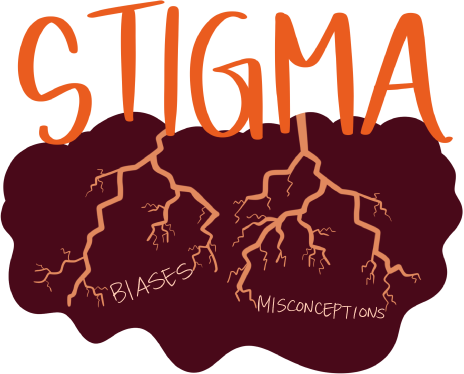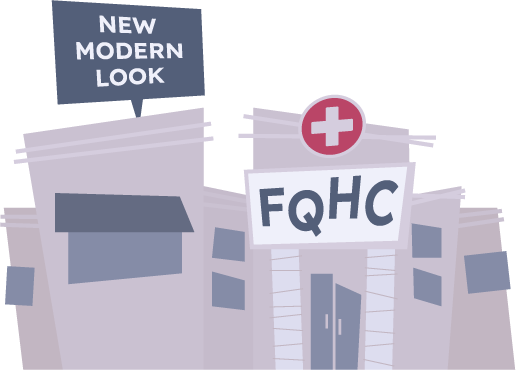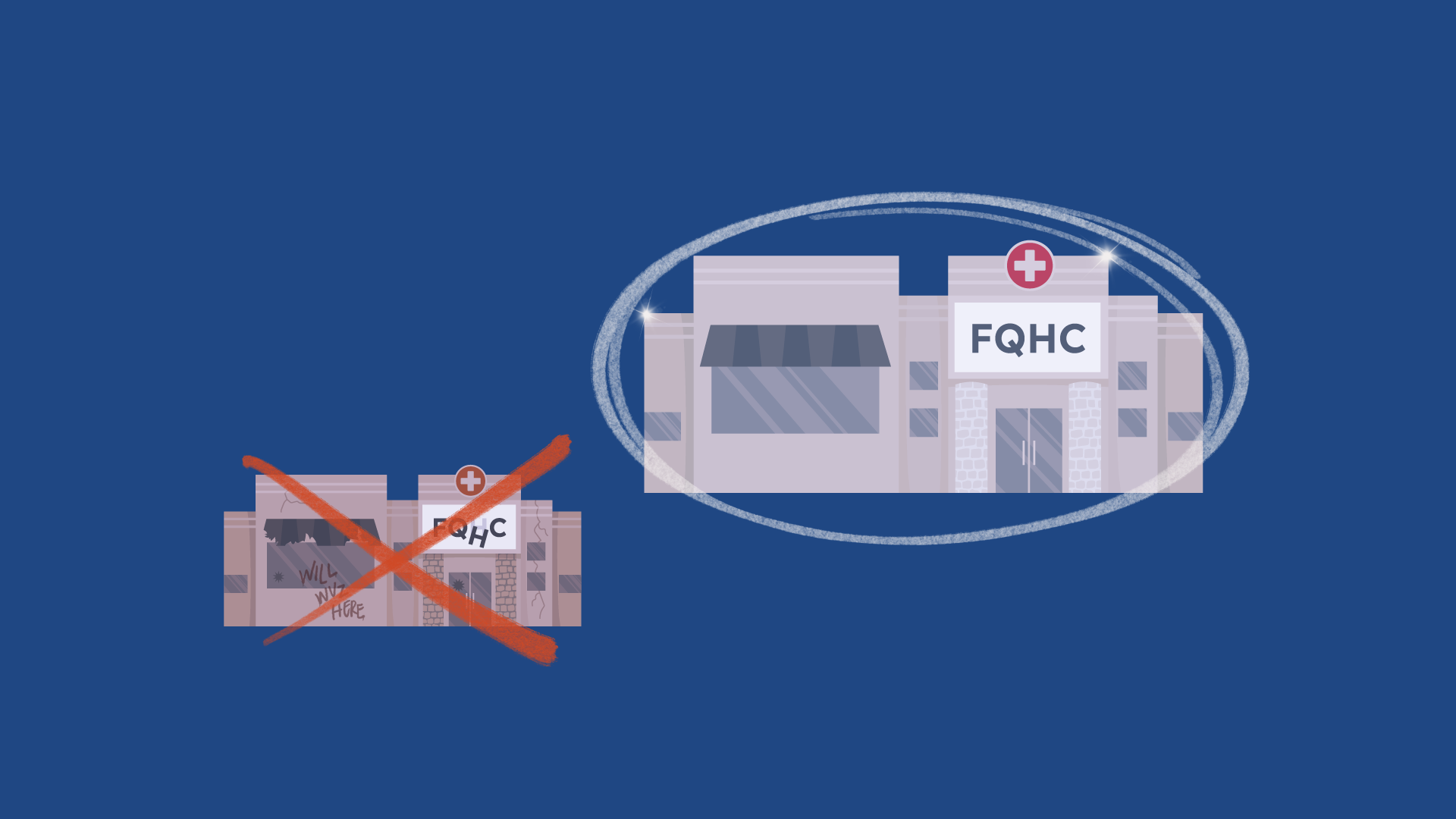FQHCs are a cornerstone of the American healthcare system, providing essential healthcare services to underserved communities. However, despite their central role, FQHCs are often exposed to a stigma that prevents their growth, undermines their mission, and limits access to healthcare to those who can’t afford private insurance coverage.
While it should be our collective responsibility to rethink how we perceive FQHCs and contribute to their recognition as valuable healthcare resources, this change will likely have to be initiated by FQHCs themselves – and what better way to address it than through healthcare marketing?
Why The Stigma?
It’s not lost on many of us that the stigma surrounding the FQHCs is primarily rooted in misconceptions and biases.
Many people think that FQHCs cater only to low-income communities, and overlook their role in providing high-quality, comprehensive healthcare. This thinking, in turn, puts FQHCs in a never ending loop, because the lack of paying patients prevents them from the financial growth and stability needed to expand and improve their services and reach more patients in need and paying patients, too.
To alter this perception, we must understand the leading causes behind it:
Association with Low-Income Populations
FQHCs are often viewed as clinics for the poor, which can deter people with higher spending power from seeking care there due to peer pressure and societal expectations that could drive feelings of shame or embarrassment. This is rooted in the existing stigma around those who do turn to FQHCs for care.
Additionally, many FQHCs are located in economically disadvantaged neighborhoods, which can additionally reinforce this view.
The interior design and ambiance of FQHCs can also affect public perception: clinics that look outdated or poorly maintained can instill expectations about quality of care, cleanliness, and other important factors. Though this is a biased attitude, it is one that should be openly addressed to open the door to change.
Concerns About Quality of Care
There is a misguided belief that the care provided at FQHCs is inferior to that at private practices or hospitals. This belief is often based on aesthetics and a lack of awareness about the qualifications of FQHC staff.
In reality, FQHCs meet stringent federal standards and employ highly qualified healthcare professionals.
Making small (and affordable) changes to the physical environment and actively promoting the expertise of the staff can effectively address these quality concerns. Additionally, sharing patient success stories and outcomes can paint a fair picture: that FQHCs provide care that is on par with, if not better than, many private practices and hospitals. But we’ll get to that in more detail soon.
Lack of Awareness
Many people are simply unaware of the range of healthcare services FQHCs provide, including preventive care, mental health care, dental services, etc. When we seek care, we tend to choose specialized providers who can provide a holistic approach, and the lack of awareness about the scope of services provided in FQHCs can easily lead to underutilization of these resources by target communities too, not to mention privately insured patients.
Promoting the full spectrum of services through community outreach and targeted marketing campaigns can help educate the public about the true value of FQHCs and the care they provide. By highlighting services like immunizations, chronic disease management, dental care, mental health, and others, FQHCs can attract a broader patient base, eliminate the stigma, and diversify the patient mix to ensure stability and growth.
The Role of Marketing in De-stigmatization
Healthcare marketing plays a leading role in changing public perception and eliminating the stigma around FQHCs. Implementing well-crafted marketing strategies will help you highlight the quality, accessibility, and overall importance of your health center.
Let’s explore some of the marketing techniques that FQHCs can benefit from the most in the fight against misconceptions.
Rebrand: Bring Your FQHC into A Modern Era
Rebranding can do a lot of the heavy lifting in shifting the public perception. Outdated branding isn’t attractive to modern consumers, so even the simplest touch-ups can change the way the public perceives you.
However, rebranding doesn’t end with changes in logos or aesthetics: it relies on a comprehensive strategy that stands on three pillars: messaging, storytelling, and visibility.
Crafting messages that highlight the quality and comprehensive nature of care FQHCs offer is crucial for reshaping public opinion. By sharing success stories of satisfied patients, you can humanize your center and demonstrate its positive impact on people’s lives. Increasing the visibility of your FQHC through targeted advertising in various formats and media can make you more prominent, normalize the use of FQHCs, and present you as a valuable and accessible option for all members of your community, no matter how deep their pockets are.
Educate: Conduct High-Impact Campaigns
To eliminate the stigma around FQHCs, we need informed people who further inform people in their circles, and so on, until we’ve reached a critical mass. Educational campaigns are a great tool to dispel myths and inform the public about your FQHCs offering.
By highlighting your whole range of services, these campaigns will let people see that FQHCs aren’t just for emergencies or basic care, but instead provide comprehensive healthcare solutions in the areas of prevention, improvement, and treatment.
To be successful, your educational campaigns must cover additional bases: telling the public about the strict standards FQHCs must meet in order to keep their doors open will eliminate concerns about the quality of care.
Moreover, hosting community events or health fairs can directly involve the community, let them meet your staff, and create positive associations, establishing a stronger connection between your center and the people it serves.
 Reach: Leverage Social Media
Reach: Leverage Social Media
Social media is a powerful tool for reaching a broad audience, becoming relevant, and changing public perception to eliminate the stigma around FQHCs.
Collaborating with relevant influencers who care about community issues can help you shift public opinion, and even become a viral topic online. Creating content that aims to engage the audience such as live Q&A sessions, popular ‘myth vs. reality’ short videos, and ‘meet our doctors’ series can demystify FQHCs, making them more approachable, understandable, and attractive to potential patients.
Sharing patient testimonials and stories on social media will help you personalize your outreach and humanize your FQHC brand and its impact on the community and health outcomes.
Praise: Build Your Online Reputation
Let’s talk a bit more about the modern word-of-mouth: patient reviews and testimonials.
Managing online reputation is crucial for FQHCs looking to build trust in the community and attract more diversified patients.
Make sure your information on relevant platforms is accurate and encourage patients to leave reviews on Google Business Profile and Apple Business Connect to enhance visibility and credibility. Creating separate GBP and ABC profiles for your prominent specialists will bring you more visibility and credibility, too.
Actively managing profiles on healthcare review sites such as Healthgrades and even Yelp will help you address negative feedback and showcase positive patient experiences.
To go the extra mile, make patient surveys part of the experience and collect relevant information that’ll help you both improve the quality of care and the public perception of your health center.
Using healthcare-specific platforms for streamlining, collecting and responding to patient feedback will improve service quality and patient satisfaction but also lead to better reviews and ratings.
Connect: Build Partnerships
Forming partnerships with trustworthy organizations can instill credibility, expand the reach, and help eliminate the stigma around FQHCs.
Partner with local schools and employers to provide information about FQHC services to normalize their use and further integrate your center into the community. Work with non-profit organizations to reach vulnerable groups and engage in joint educational campaigns.
If possible, collaborate with larger healthcare organizations and specialists to enhance service offerings and establish your FQHC as a comprehensive care provider.
Leveraging Marketing Technology to Change The Perception
Eliminating the stigma around FQHCs isn’t just a matter of changing public perception; it’s about ensuring everyone has access to high-quality healthcare without shame or hesitation of any kind.
A strategic approach to healthcare marketing can help you reshape the narrative and highlight the critical role of FQHCs in our healthcare system and your commitment to providing comprehensive, quality care for all.
SocialClimb’s comprehensive healthcare marketing platform offers tailored solutions for FQHCs to implement these strategies effectively. Streamline, centralize, and automate your marketing activities: from reputation management and electronic patient surveys to targeted advertising, HIPAA-compliant PM/EHR integrations, and detailed marketing reporting. Explore the only platform on the market that offers predictive targeting in healthcare: a high-ROI approach that’ll help you effectively target high-value patients who’ll impact both your financial stability and your reputation.
It’s time we recognized the invaluable contributions of FQHCs to our communities: and with the right strategies and tools, we can ensure FQHCs are seen for what they truly are: the pillars of accessible high-quality healthcare.











